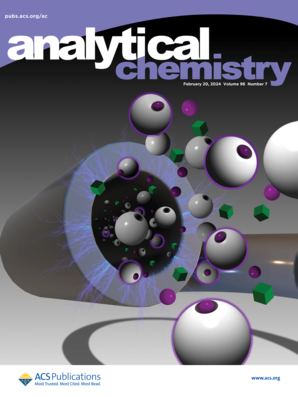Customized Controllable Pyrophosphate Nanosensor Based on Lanthanide Metal–Organic Frameworks for Accurate and Sensitive Detection of Nucleic Acids
IF 6.7
1区 化学
Q1 CHEMISTRY, ANALYTICAL
引用次数: 0
Abstract
Pyrophosphate (PPi) and nucleic acid amplification play a critical role in medical diagnostics, making the development of precise nanosensors essential. Lanthanide metal–organic frameworks (Ln-MOFs) are increasingly recognized for their potential in advanced luminescent biosensing applications. However, research on customized controllable responses in Ln-MOF nanosensors is still lacking, which is critical for the molecular-level modular design. In this work, we introduce a ligand engineering strategy to regulate coordination-induced antenna effect emission in Ln-MOFs, optimizing their pyrophosphate (PPi) sensing from fluorescence turn-off to turn-on modes. By tuning the coordination environment through ligand programming, we discovered a “near coordination compensation” effect, allowing for controllable transitions between aggregation-induced emission and quenching (AIE/AIQ). This reversible response was supported by density functional theory calculations. Using a Eu3+/Tb3+ dual-emission Ln-MOF designed with 2,6-pyridinedicarboxylic acid as the optimized ligand, we developed a self-correcting PPi nanosensor with a detection limit of 0.2 μM. Moreover, this system enabled ultrasensitive nucleic acid detection, achieving a limit of detection (LOD) as low as 1 fM, with applications in DNA pyrosequencing, qPCR, and DNA epigenetic modification (5-formylcytosine) analysis. These findings shed light on the structural and photophysical factors controlling Ln-MOF luminescence, offering a promising platform for highly accurate and sensitive nucleic acid detection in biomedical diagnostics.

求助全文
约1分钟内获得全文
求助全文
来源期刊

Analytical Chemistry
化学-分析化学
CiteScore
12.10
自引率
12.20%
发文量
1949
审稿时长
1.4 months
期刊介绍:
Analytical Chemistry, a peer-reviewed research journal, focuses on disseminating new and original knowledge across all branches of analytical chemistry. Fundamental articles may explore general principles of chemical measurement science and need not directly address existing or potential analytical methodology. They can be entirely theoretical or report experimental results. Contributions may cover various phases of analytical operations, including sampling, bioanalysis, electrochemistry, mass spectrometry, microscale and nanoscale systems, environmental analysis, separations, spectroscopy, chemical reactions and selectivity, instrumentation, imaging, surface analysis, and data processing. Papers discussing known analytical methods should present a significant, original application of the method, a notable improvement, or results on an important analyte.
 求助内容:
求助内容: 应助结果提醒方式:
应助结果提醒方式:


